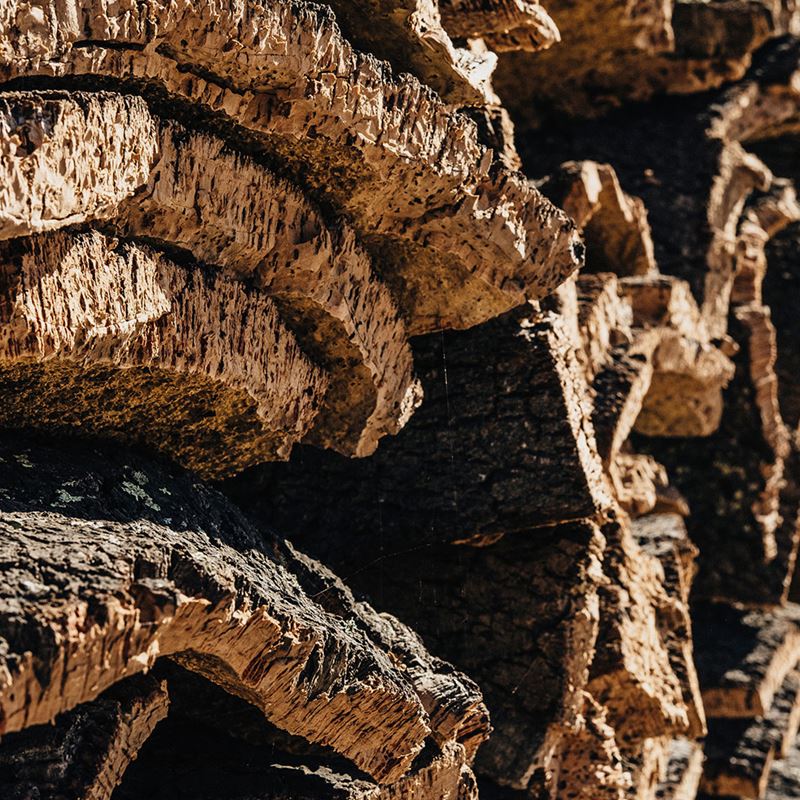Amorim Cork Composites’ products have a negative Carbon Balance – which is good news for the environment
Amorim Cork Composites’ products have a negative Carbon Balance – which is good news for the environment
BlogThe Life Cycle Assessments analyzed different ACC products and concluded that they all have a negative carbon balance, when considering the carbon sink factor (CO2 sequestration) of the cork oak forest and the emissions associated with the industrial process.
From the origin of the raw materials to the factory gate: what are the environmental impacts of Amorim Cork Composites’ products? This was this question that we wanted to answer when we began a Life Cycle Assessment (LCA) process for several products. The results showed that, without exception, they all have a negative carbon balance, when considering the CO2 sequestration of the cork oak forest and the CO2 emissions associated with the industrial process.
What is an LCA? It is a method of assessing and quantifying the environmental impact of a product or process. There are different life cycle assessments, but the methodology considered and used by Ernst & Young - the consultancy firm that conducted this study - used a cradle-to-gate approach (from the forest to the factory gate), which analyzed all stages - from forestry management activities, cork crushing and use of recycled materials, transportation, and also all industrial processes.
“In the Life Cycle Assessment process, all stages of the product's life were analyzed: spanning forest management activities, cork crushing, transportation, and the industrial process. All the products analyzed have a negative carbon balance.”
Several of Amorim Cork Composites’ products were considered for analysis. The studies revealed that all the analyzed products have a negative carbon balance, including Top Layer NRT® 94 that has a negative carbon balance of -39,3 kg CO₂/m², Underlay Go4Cork Fusion with -14,2 kg CO₂/m², and Corkeen with -102 kg CO₂ eq/m², among others.
This means that the carbon sequestration of the cork oak forest associated to these products exceeds the CO₂ emissions resulting from their production.
-
Cork: a natural raw material, numerous environmental advantages
When cork is used in the development of a product, this means that all the environmental advantages associated with this raw material are also integrated in the product. Cork is 100% natural and has unique, unparalleled properties: it is light, impermeable to liquids and gases, elastic and compressible, offers thermal and acoustic insulation, has a slow combustion and is very resistant to friction. It is also completely renewable and recyclable, which means that from an environmental, social or economic perspective it is one of the world’s most versatile materials.
The cork oak forest forms part of one of the world’s 36 biodiversity hotspots, alongside the Amazon rainforest, the African Savanna and Borneo. It is a natural fire barrier, regulates the hydrological cycle, and is also a natural CO2 sink. Studies reveal that for each ton of cork produced, the cork oak forest sequesters up to 73 tons of CO2.

Circular economy: by-products from other industries take on a new life at Amorim Cork Composites
Amorim Cork Composites has always been committed to ensuring the transition from the linear economy which is based on the "take, make, waste" paradigm, to the circular economy - where nothing is wasted, everything is valued.
-
Economia circular: subprodutos de outras indústrias ganham uma nova vida na Amorim Cork Composites
A Amorim Cork Composites sempre se comprometeu em assegurar a transição de uma economia linear baseada no "extrair, transformar e descartar" para uma economia circular, onde nada é desperdiçado, tudo é valorizado.

Based on a strong culture of innovation, we develop highly efficient solutions and incorporate by-products from other industries - such as foams, polymers and rubbers - into our processes, giving them a second life, since they would normally be deposited in landfills.
Examples include Footcork® Evolution and Underlay Fusion. By combining circular economy materials with cork, we reinforce the properties of our raw material and present innovative solutions to the market. Furthermore, by using by-products from other industries, we don’t need to use new raw materials, and thereby mitigate our environmental impact on the planet.
These results reinforce Amorim Cork Composites' position with regard to the development of an activity that has a positive impact on climate regulation, since we foster higher levels of CO2 sequestration than our CO2 emissions.
Would you like to know more about this subject?
Let us know your details and we'll get back to you.
* The life cycle assessment, which was conducted in 2019 and 2020, was based on a cradle-to-gate approach, i.e. contemplating all environmental impacts up to the factory gate. The assessment also included additional information on the carbon sequestration of the cork oak forest. The methodology of the EY studies was based on the ISO 14040/44 (ISO, 2006) standards, complemented with guidelines from the Handbook - General Guide for Life Cycle Assessment - Detailed guidance (EC-JRC, 2010), and the International Reference Life Cycle Data System (ILCD). The production data was provided by Amorim Cork Composites, while data on the general production processes associated with the production of raw materials, energy, transport and waste management was obtained from the ecoinvent 3.5 database (Werner, et al., 2016).